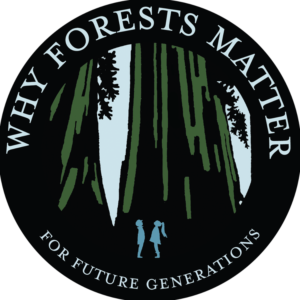The Case for Establishing an Independent Forest and Resource Management Agency to Secure Healthy Forests in California
Excerpted from:
Richard A. Wilson and Sharon E. Duggan, WHY IT IS TIME FOR A “CALFIRE DIVORCE”: THE CASE FOR ESTABLISHING AN INDEPENDENT FOREST AND RESOURCE MANAGEMENT AGENCY TO SECURE HEALTHY FORESTS IN CALIFORNIA, 12 Golden Gate U. Envtl. L.J. 1 (2020).
https://digitalcommons.law.ggu.edu/gguelj/vol12/iss1/2
Note:
Richard Wilson was director of the California Department of Forestry & Fire Protection from June 1991 to mid-March 1999.
Sharon Duggan served for many years as staff counsel for the Environmental Protection Information Center, a prominent public interest leader protecting California’s forests and its resources. She is co-author with Tara Mueller of “Guide to the California Forest Practice Act and Related Laws, Regulation of Timber Harvesting on Private Lands in California.”
Wilson is Chair of Why Forests Matter (WFM); Duggan is a board member of WFM.

Introduction
Nearly one-third of California is forested, with 33 million acres of private and state forestlands. These forests provide critical resources for our state, and most particularly source at least 60% or more of our necessary water supply. California’s forest resources and timberlands “are among the most valuable of the natural resources of the state.” Historically, California’s Department of Forestry and Fire Protections (“CalFire”) has been charged with protecting these resources, with a twofold mission: (1) the protection of commercial timber on all nonfederal lands from improper logging activities and (2) the protection of watersheds from wildland fire in lands identified as part of the State Responsibility Area (“SRA”).
CalFire is required to protect California’s forests and their resources, by governing private-land logging to ensure that forest productivity “is restored, enhanced, and maintained” and to achieve “maximum sustained production of high quality timber products” for this and future generations. California’s Forest Practice Act was created and is intended to ensure healthy forests with protection of their environmental, economic, and community resources. Protection of California’s forest natural resources is the only way productivity of high-quality wood products can be achieved.
That has not happened. Instead, today many of California’s forests are in “an unhealthy condition,” with increased forest density containing more small trees, fewer large trees, and more dead trees, creating intensified and devastating wildfire conditions. CalFire carries an increasingly immense responsibility as a premier fire-fighting agency, top-ranked in the world. Every year, the demand to contain and stop devastating fires throughout our state increases.
Fire prevention efforts have driven the agency’s financial budget, whereas forest resource management has been captive to politics largely driven by industrial timberland owners. Each year the budget for fire prevention increases exponentially to respond to the expanding demand to fight catastrophic fires during longer designated fire seasons. CalFire’s failure to adequately govern private-land logging has created conditions which contribute to increased fire risk, resulting in a growing disparity favoring funding for fire suppression rather than resource management governance.
California now has a damaging gap in the governance of its forests. California’s core sustainable forest management program — intended to ensure healthy forests and thus prevent fire prone conditions — has been relegated to ineffectiveness. CalFire’s lack of governance has resulted in fire-prone conditions: forests with smaller and smaller trees, increasingly dense stands of trees, and reduced overall health and lack of biodiversity.
These conditions have now converged to create disastrous conflagration. Rather than CalFire securing the foundation to govern logging to attain healthy forests, California is now forced to fix damaged forests at significant public cost. The failure to fulfill the promise of California’s Forest Practice Act, coupled with insufficient agency resources, defeats California’s commitment to ensure healthy forests for this and future generations.
It is time to remove governance of California’s core sustainable forest management mandate from CalFire to allow it to focus on its overwhelming fire agency obligations.
It is time to remove governance of California’s core sustainable forest management mandate from CalFire to allow it to focus on its overwhelming fire agency obligations. In the absence of adequate and dedicated funding and resource personnel, CalFire is not satisfying California’s forest resource management goals and objectives. After decades of decline, California must renew its fundamental commitment to sustainable forest management.
The governance of forest resource management requirements, as set forth in the Z’Berg Nejedly Forest Practice Act of 1973, should be transferred to another agency, the focus of which is resource and land conservation. California needs one dedicated and adequately funded agency with professionally trained staff who understand the complexity and interrelationships within the entire forest system, its productivity, and all of its resources. This different agency would be required and accountable to secure California’s commitment in governing forest resource management.
An agency like this would be able to ensure that our forests are restored, enhanced, and maintained to protect the environmental, economic, and social resources that healthy forests provide. An independent agency dedicated to governing forest resource management and land conservation is more critical than ever as California faces and attempts to respond to the irrefutable climate crisis. Our forests must be increasingly available to provide enhanced carbon sequestration for the survival of this and future generations. Such a sepa- ration enables healthy forests and leaves CalFire to do its excellent firefighting work.
. . .
To read the entire article, visit the Golden Gate University Environmental Law Journal:
Why It Is Time for a “CalFire Divorce”
 Friends of Gualala River Protecting the Gualala River watershed and the species living within it
Friends of Gualala River Protecting the Gualala River watershed and the species living within it


